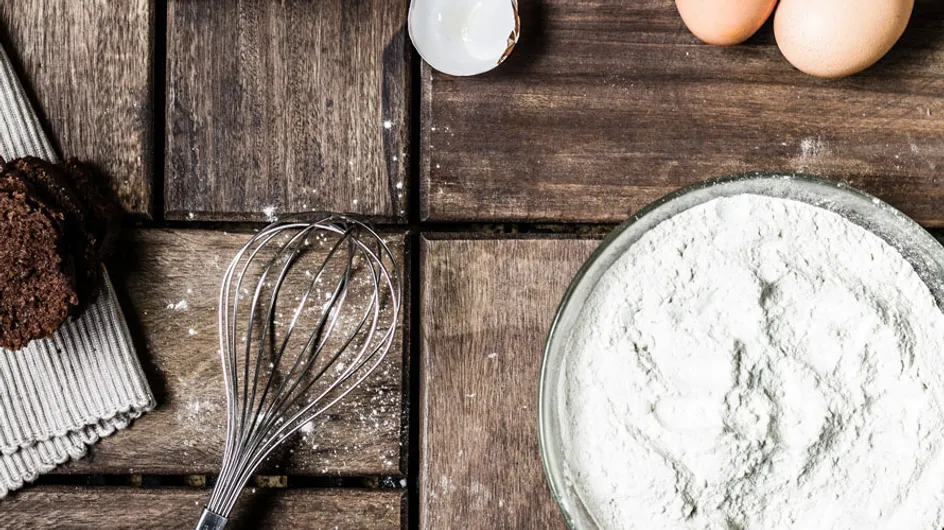Flour is basically ground wheat. Because of the starch and gluten it contains, it gives shape and consistency to foods.
Extraction rate
This is the proportion of flour produced from the initial weight of wheat. If 100kg of wheat is used to obtain 75kg of flour, the extraction rate is 75%.
Flour types
In some countries, flour is defined by the amount of ash it contains. This relates to the mineral content, mostly found in the bran, and the impurities in wheat grains. In the UK there are no standardised flour types indicating ash content but there are some general categories.
There are three basic types of flour produced from wheat:
- White: most of the bran and germ are removed, along with fat and minerals, with a 75% extraction rate.
- Brown: some of the bran and germ are removed, with an 85% extraction rate.
- Wholemeal (also called wholewheat or wholegrain): the whole of the grain is used and nothing removed or added, with a 100% extraction rate.
Some common types of wheat flour used in cooking and baking are:
- Soft flour: contains around 8% protein and is used for cakes, biscuits and pastries.
- Plain flour: contains 10% protein and is used for biscuits and sauces. This type of flour is an acceptable compromise for most baking requirements.
- Self-raising flour: contains 10% protein and added raising agent (such as baking powder) and is used for sponge cakes, scones and puddings.
- Strong flour: contains a maximum of 17% protein and is used for bread, Yorkshire pudding, puff pastry and choux pastry.
- Wheatgerm flour: white or brown flour with at least 10% added wheatgerm.
- Malted wheatgrain flour: brown or wholemeal flour with added malted grains.
- Stoneground flour: wholemeal flour ground between two stones.
Other types of non-wheat flour
There also some types of flour which are not derived from wheat:
- Cornmeal (maize flour): depending on how finely it’s milled, cornmeal can be used for making bread or dishes such as Mexican tortillas or Italian polenta.
- Chestnut flour: greyish in colour and sweet-tasting, this flour is mixed with wheat flour and doesn’t contain gluten.
- Buckwheat flour: nutty, grey in colour and spotted with black bits, this makes an excellent wheat substitute for those with gluten allergies. It's often mixed with other flours because it has a bitter taste.
- Rice flour: made from milled or brown rice, this flour doesn’t contain gluten and is used a lot in South East Asian cusine.
Advice
- If flour looks bluish or reddish in colour, it’s probably not suitable for use any more!
- The size of the grains vary according to the producer. Good quality flour is fine, soft and smooth.
- Mixing flour with water produces a stretchy, workable dough due to its gluten content.
- Flour should always be kept in an airtight container, stored away from heat and damp.
- Gluten-free flour doesn‘t rise during cooking and must therefore be mixed with other types of flour to make bread, for example.











